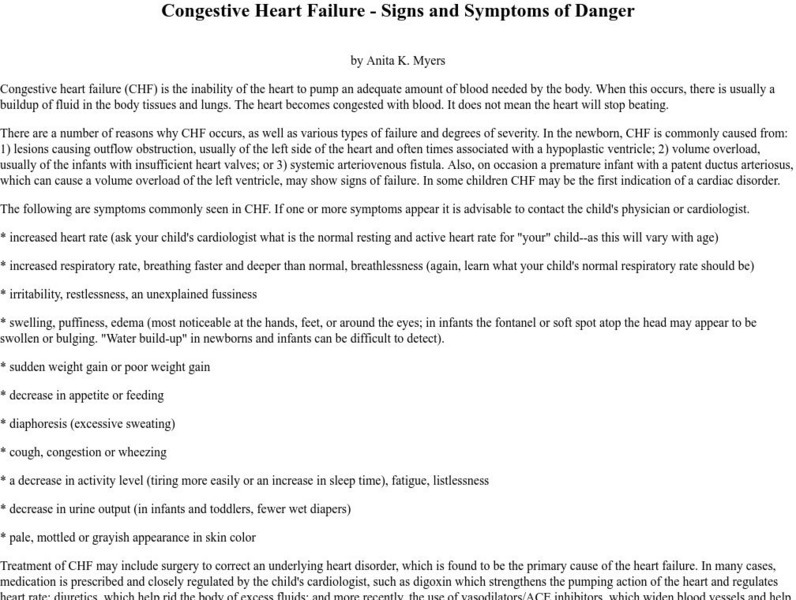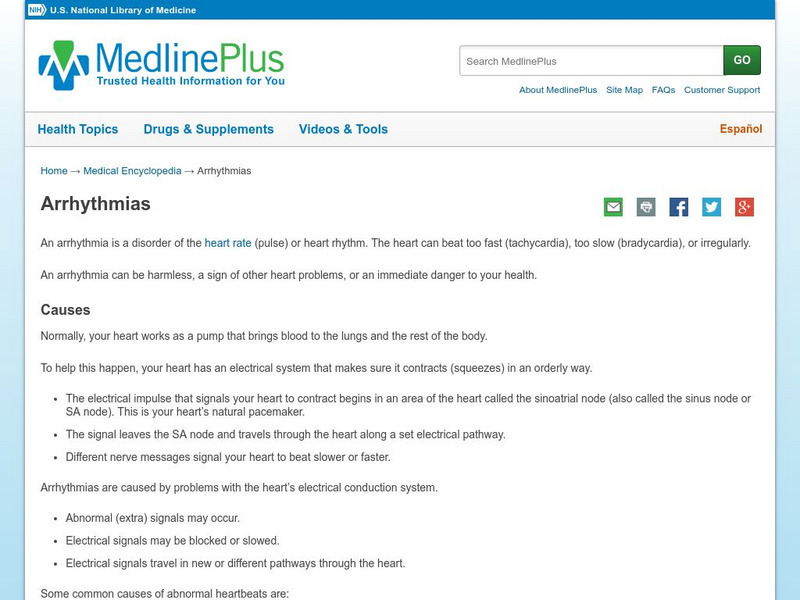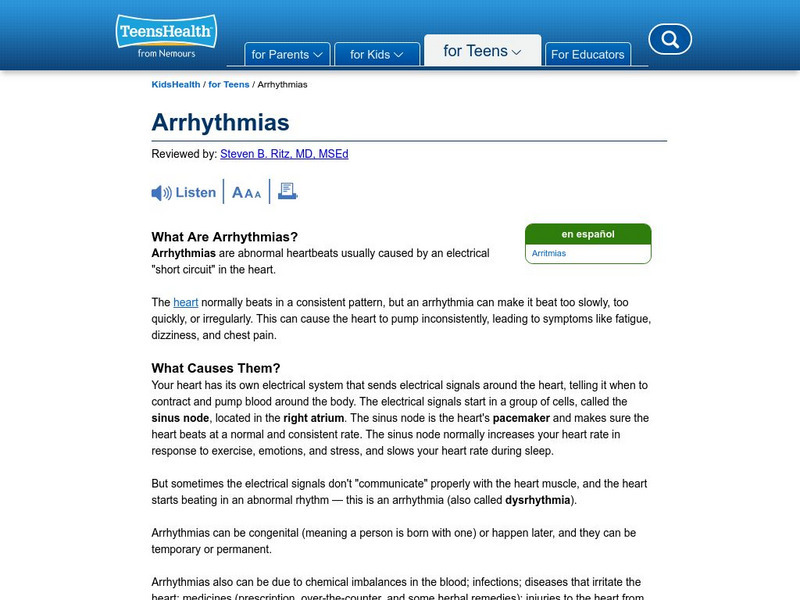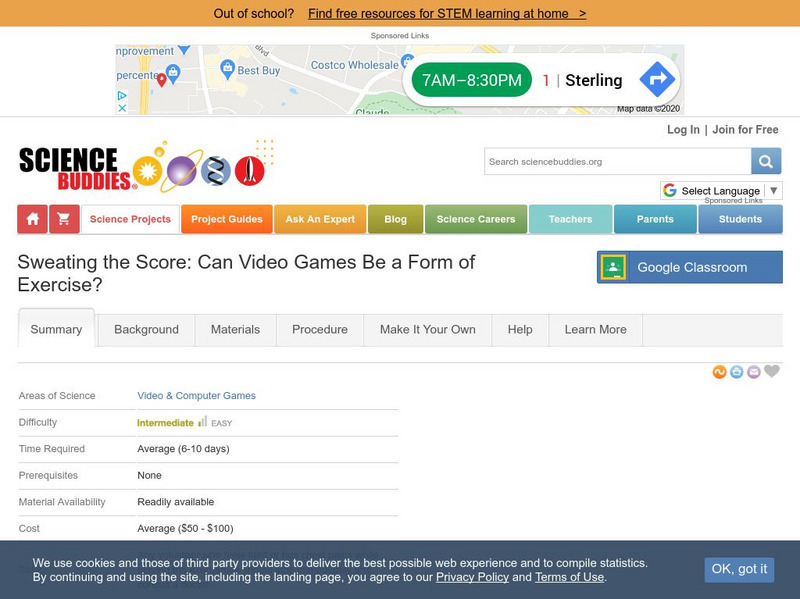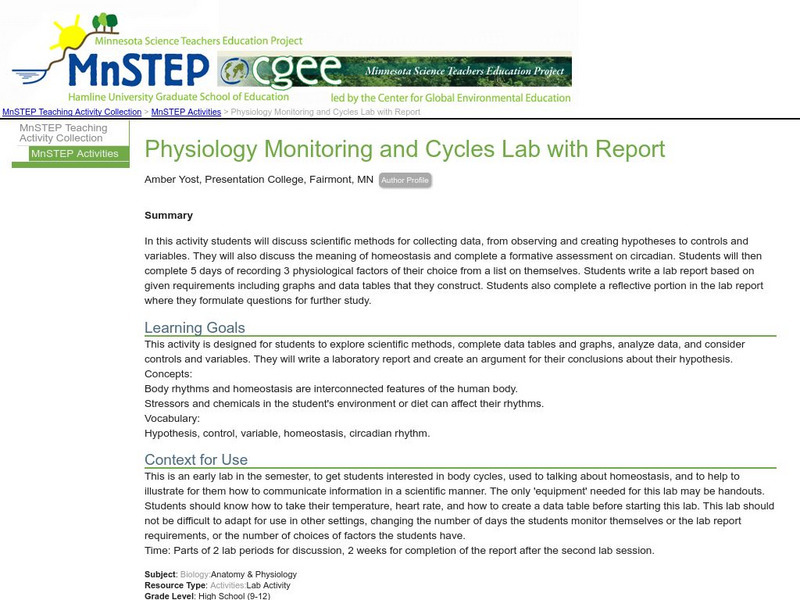Treehut
Suzy's World: Heart
Find out why your heart beats and perform an experiment to see your pulse moving.
California State University
Congestive Heart Failure: Signs and Symptoms of Danger
This website provides information about the signs and symptoms of congestive heart failure in children. It mentions increased heart and respiratory rate, wheezing and other chief complaints.
BBC
Bbc Schools: Ks2 Bitesize: Science: Living Things: Circulation
Check Steve's cardiovascular health before he starts filming his dangerous wildlife special. Following the activity, read more about the heart, and then take a quick quiz to check for understanding.
Science Museum of Minnesota
Lesson Plan: Lub Dub (Valves)
In this concise site, students investigate the source of the sounds of the heart. Contains related connecting links.
National Cancer Institute at the National Institutes of Health
Seer Training Modules: Introduction to the Cardiovascular System
Self-guided learning activity where students learn about the structure and function of the human cardiovascular system. There is a short quiz at the end of the lesson to check for understanding.
Texas Heart Institute
Texas Heart Institute: Heart Information Center: Arrhythmia
One-page article provides useful information on arrhythmia, including categories, symptoms, diagnosis, and treatment.
US National Library of Medicine
Medline Plus: Arrhythmias
A fact sheet on arrhythmias tell what they are, what causes them, different types of arrhythmias, risk factors, symptoms, treatment, and prognosis after diagnosis. Numerous diagrams of the heart accompany the article.
TeachEngineering
Teach Engineering: Do You Have the Strength?
In this activity, students squeeze a tennis ball to demonstrate the strength of the human heart. Working in teams, they think of ways to keep the heart beating if the natural mechanism were to fail. The goal of this activity is to get...
PBS
Pbs Learning Media: Math + Arts: Drum Beating & Foot Stomping
In this lesson, students watch African dance and calculate tempo. Students also calculate heart beats at rest and after exercise and convert beats per second to beats per minute. Media resources and teacher materials are included.
Bill Nye
Bill Nye: Listen to This!
In this tutorial, Bill Nye explains how to hear the sound of your heart.
Centers for Disease Control and Prevention
Centers for Disease Control: Heart Fact Sheet
A revealing chart is found in this brief site that illuminates the areas of the country where the highest heart disease death rates are found. You will also find heart disease facts which contain several revealing points about the...
Other
Med Help: The World's Largest Health Community
Med Help is designed to help "patients find the highest quality medical information in the world today." It includes an eNewsletter, news from The Cleveland Clinic Heart Center and ABC TV, and a list of articles which can be searched by...
ClassFlow
Class Flow: Keeping Healthy
[Free Registration/Login Required] This unit helps children to learn that there are many aspects to keeping healthy. Children learn about the heart and how heartbeat is affected by exercise. It gives opportunities to explore issues about...
PBS
Pbs Teachers: Drinking Straw Pulse Measurer
Measure the human pulse by counting the movements of a drinking straw attached with clay to the pulse point on the neck. Predict activities that affect pulse rate, and compare your pulse with another person's.
Curated OER
Kids Health: Arrhythmias
A wealth of information on arrhythmias. Find out about the kinds of arrhythmias, causes, and treatments.
Open Curriculum
Open Curriculum: Circulatory System
Detailed information about the many functions and components of the cardiovascular system. Also looks at the lymphatic system and cardiovascular disease.
Curated OER
Kids Health: What's the Big Sweat About Dehydration?
Find out why it is so very important to drink water in order to prevent dehydration. This article also tells you what to do if you do become dehydrated.
PBS
Pbs: Real Life Math: Physical Trainer
The general manager of a fitness center explains how numerical calculations, percentages, and ratios are critical to his job in this video from KAET. In the accompanying classroom activity, students explore percentages, fractions, and...
Khan Academy
Khan Academy: Blood Oxygen Levels May Determine Cardiac Muscle Regeneration
Practice for the MCAT by answering questions based on the given bar graphs showing apoptosis and cytokinesis rates.
TED Talks
Ted: Ted Ed: How Do the Lungs Work?
When you breathe, you transport oxygen to the body's cells to keep them working, while also clearing your system of the carbon dioxide that this work generates. How do we accomplish this crucial and complex task without even thinking...
Science Buddies
Science Buddies: Sweating the Score: Can Video Games Be a Form of Exercise?
The majority of video games are sedentary, meaning done in one position, but there is an increasing trend toward video games where the players are physically active. Whether or not these type of video games can be considered exercise is...
Science Education Resource Center at Carleton College
Serc: Physiology Monitoring and Cycles Lab With Report
Using physiology monitoring, students will understand how to collect data using scientific methods in this activity. Students will also learn how to communicate the finding in a lab report. Physiology monitoring will include measuring...
BioEd Online
Bio Ed Online: Respiratory System
In the following lessons for k-5 students are introduced to the structures within the human respiratory system.
PBS
Pbs Learning Media: Body Control Center
Throughout the day, your nervous system monitors and makes endless adjustments to your body's basic systems--all to keep you alive. This interactive feature illustrates the complexity of such a task.
Other popular searches
- Heart Rate Activities
- Heart Rate Experiments
- Heart Rate Health
- Heart Rate Monitors
- Target Heart Rate
- Heart Rate Homeostasis
- Heart Rate and Pulse
- Heart Rate and Spreadsheets
- Active Heart Rates
- Earthworm Heart Rate
- Heart Rate Change
- Heart Rate Music



